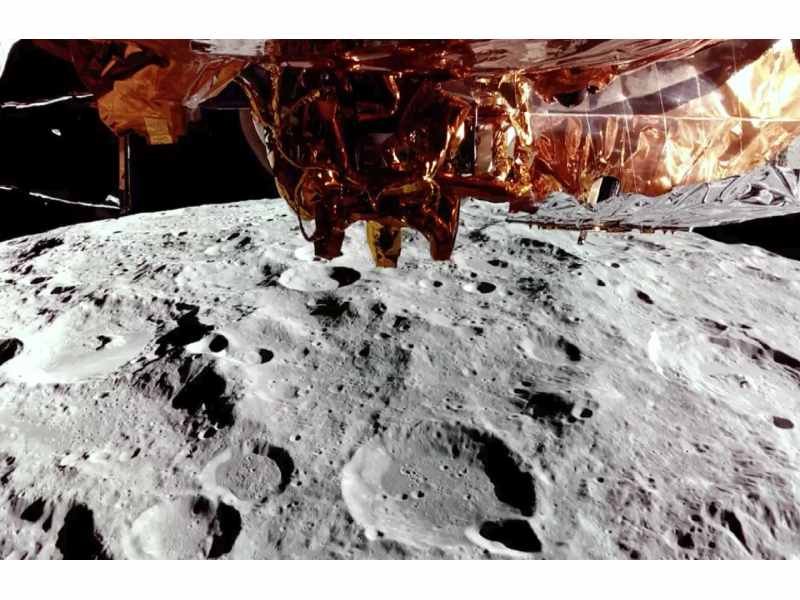- Firefly Aerospace’s Blue Ghost lander successfully touches down on the Moon.
- The mission is part of NASA’s Commercial Lunar Payload Services (CLPS) initiative.
- Blue Ghost aims to study lunar soil, radiation, and dust behavior.
- Intuitive Machines’ IM-2 mission follows, targeting the Moon’s south pole.
- These missions mark a major step in private sector lunar exploration.
Firefly Aerospace’s Blue Ghost lander has successfully landed on the Moon, making it the second private US company to achieve this milestone. The landing took place at Mare Crisium, a vast lunar basin on the Moon’s northeastern near side, at approximately 3:34 a.m. Eastern Time (08:34 GMT) on March 2, 2025. This mission is part of NASA’s Commercial Lunar Payload Services (CLPS) initiative, which aims to expand scientific research and pave the way for future crewed Artemis missions.
Blue Ghost launched aboard a SpaceX Falcon 9 rocket on January 15, 2025, sharing its journey with a Japanese lander set for a separate landing in May. The spacecraft carried ten advanced scientific instruments, including a lunar soil analyzer, a radiation-tolerant computer, and an experiment testing the feasibility of using Earth’s satellite navigation systems on the Moon.
Mission Goals and Scientific Contributions
The primary objective of the Blue Ghost mission is to operate for a full lunar day, equivalent to 14 Earth days. It is equipped with high-resolution cameras to capture key lunar events. One of its major tasks includes recording a total eclipse on March 14, where Earth will block sunlight from the Moon’s horizon, helping scientists analyze solar radiation effects. Additionally, it will observe lunar sunset on March 16, offering insights into how dust levitates above the Moon’s surface, a phenomenon first documented by Apollo astronaut Eugene Cernan.
The mission also carries equipment designed to analyze lunar soil and determine potential resources that could be used in future Moon missions. Scientists will study how dust behaves in the Moon’s low-gravity environment, helping to improve landing strategies for upcoming missions.
Private Companies Push Lunar Exploration Forward
NASA’s CLPS initiative has boosted partnerships with private companies like Firefly Aerospace and Intuitive Machines. These collaborations lower costs and make lunar missions more efficient. The success of Blue Ghost shows how commercial space exploration is growing. Private companies now lead in lunar research and technology development, shaping the future of space travel.
The next private lunar landing is set for March 6, 2025. Intuitive Machines’ IM-2 mission will carry the Athena lander to Mons Mouton, the Moon’s southernmost landing site ever attempted. Athena will bring three rovers, a drill for ice detection, and the Micro Nova Hopper, a drone designed to navigate rough lunar terrain.
Intuitive Machines made history in February 2024 as the first private company to land on the Moon. However, their first lander tipped over on touchdown and lost solar power, cutting the mission short. Engineers have since improved Athena’s design. This time, the lander is taller and slimmer, improving stability for a successful landing.
Blue Ghost’s success proves private lunar landers are becoming more reliable. Firefly Aerospace and Intuitive Machines continue pushing lunar research forward. With their contributions, NASA moves closer to establishing a sustained human presence on the Moon, bringing long-term space exploration within reach.
The Future of Private Lunar Missions
NASA has committed $2.6 billion to the CLPS program, making sure private companies keep sending payloads to the Moon. These missions act as crucial test platforms for future human exploration. More importantly, they play a key role in the Artemis program, which aims to land astronauts on the lunar surface later this decade.
However, the Artemis program faces growing uncertainty. Many believe NASA might scale back or even cancel some lunar missions. Instead, they could shift their focus toward Mars exploration. This debate has gained momentum, especially with Elon Musk advocating for interplanetary travel and government officials discussing where to invest resources.
Even with these uncertainties, Blue Ghost’s successful landing proves how important private companies are in shaping space exploration. As technology moves forward, companies like Firefly Aerospace and Intuitive Machines continue to push boundaries. With NASA working closely with commercial partners, the dream of sustained lunar exploration is steadily becoming a reality.


